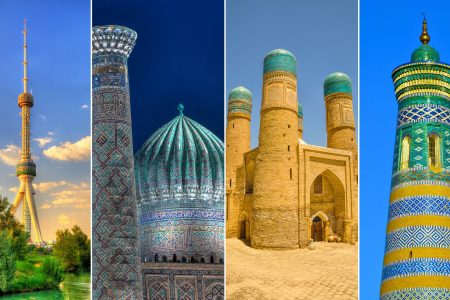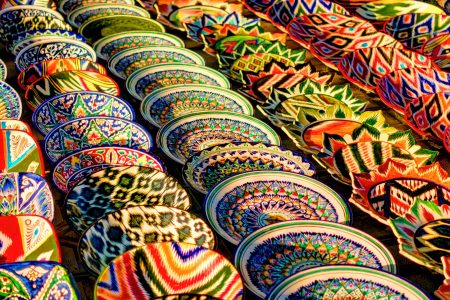The valley is situated in the east of the country and light industries, manufacturing, trades and agricultural productions are the main part of the economy. The valley is also home to many famous writers and artists from ancient times to the present day.
Nowadays, Fergana region (population 3.752 in 2019) is the most visited region in the valley by local and international tourists. The touristic infrastructure of the valley is being developed for the purpose of attracting many foreign and local tourists. The most touristic destinations are considered Kokand, Rishtan and Margilan cities in the valley.
KOKAND
Kokand is one of the most ancient and historical cities in Fergana Valley, and according to historians, it is more than 2000 years old. The population of Kokand is over 250,000 in 2020. Since ancient times, this city has been an important city for the ancient Great Silk Road caravan routes and it is still does not lose its importance for modern transport.
Kokand was the capital of the Kokand Khanate, one of the three khanates that existed in the Central Asia in the 18th -19th centuries * (Kokand – the capital of Kokand Khanate, Khiva – the capital of Khiva Khanate, Bukhara – the capital Bukhara Emirate). The period of khanates is important in the history of modern Uzbek statehood and in the national borders of modern Central Asia. Orda (palace), mosques and mausoleums preserved in this city are now important and interesting places for local and foreign tourists.
RISHTAN
The city of Rishtan (population about 45,000) is located near the city of Kokand and it is one of the oldest destinations in Fergana region. Over the centuries, the city of Rishtan has served as a major military and economic fortress. Chinese, Indian, and later Russian merchants crossed this city. Pottery has been developed in Rishtan since ancient times. The products of the famous Rishtan potters were very popular in the Eastern markets. Even today, ceramic bowls, jugs and ceramics made by Rishtan masters are well-known not only in Uzbekistan, but also in foreign countries as well. Hundreds of small and large pottery enterprises operate in the region. There are several pottery schools in Rishtan, which causes huge interest for foreign tourists.
MARGILAN
Margilan is one of the most densely populated cities in Fergana region (population over 250,000). This small town is famous for its artisans, scientists and scholars for thousands of years. In 2007, the city’s 2000th anniversary is celebrated by UNESCO.
According to manuscripts, in the 9th century AD Margilan was an important city at the Great Silk Road. Babur was our compatriot, who lived in the 15th century and the founder of Baburi empire * (Zahiriddin Muhammad Babur, the founder of the Baburi empire in India, is a descendant of Timurids. The great empire that ruled from 21.04.1526 to 21.09.1858). Taj Mahal complex in Agra was built by one of his successors Shojakhon. In his book in “Boburnoma” “Margilan – a rich city in many good things. Peaches and pomegranates are also very good” mentioned by Babur. From 1710 to 1876 years, the center of Kokand Khanate was the city of Margilan, which played the vital strategic role.
It is clear that handicrafts and trade have always been highly developed in the city. The Margilan merchants played an important role in Central Asian trade. As you know, crafts and trade have always been advanced in the city. Moreover, Margilan merchants played an important role in the trade of Central Asia.
Besides that the largest producer of the highest quality national silk products in Uzbekistan, “Yodgorlik” company is situated in this city. Margilan has always been famous for its hand-woven silk and cotton fabrics, and silk carpets. Nowadays, Local and foreign tourists can visit this company for the purpose of observing the production process of products. In addition, oriental Margilan open bazaar is also very attractive and surprising for foreign tourists.



